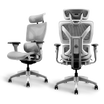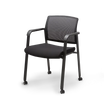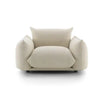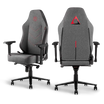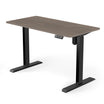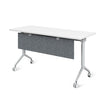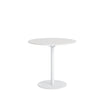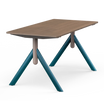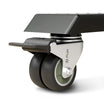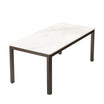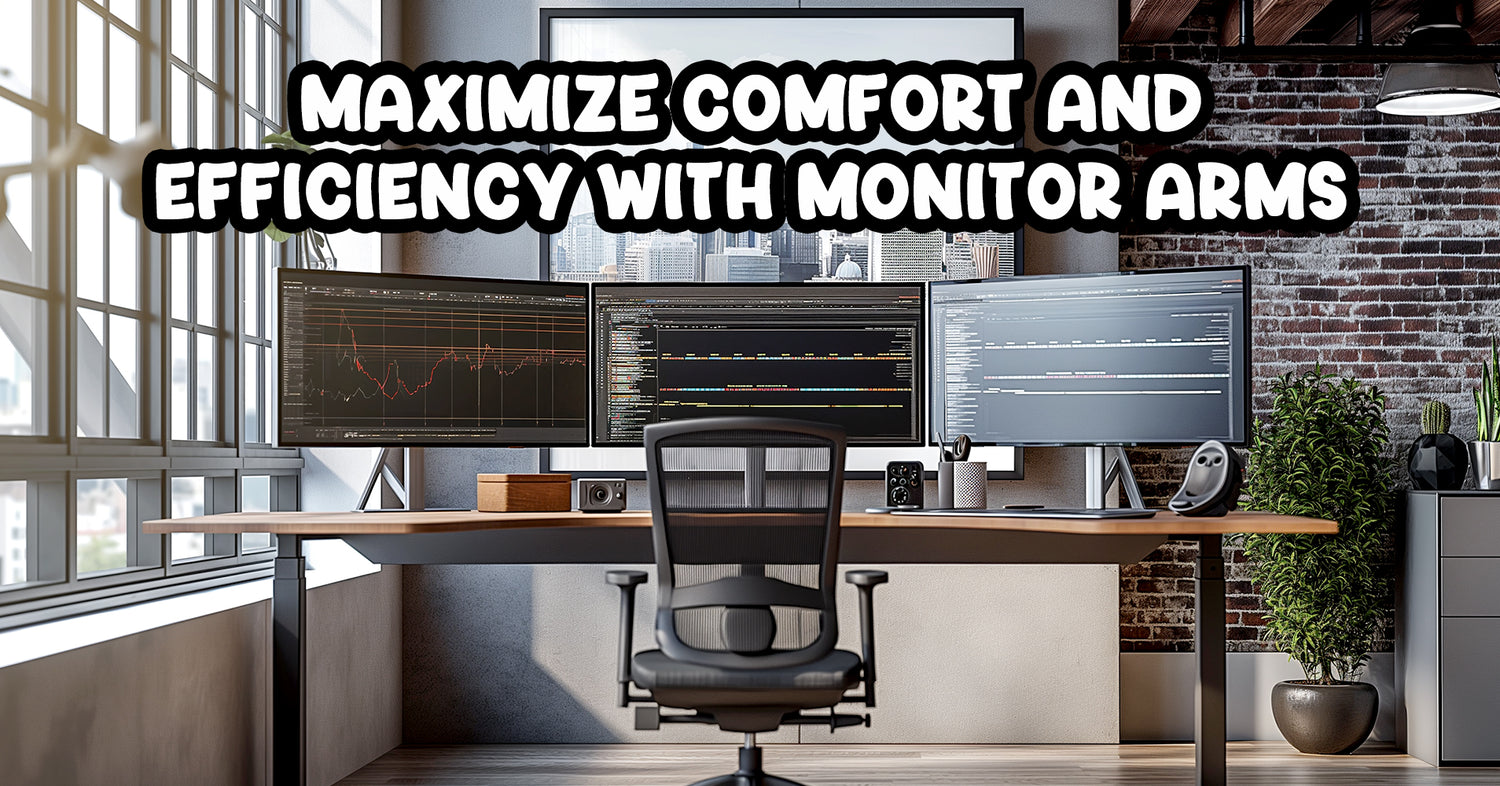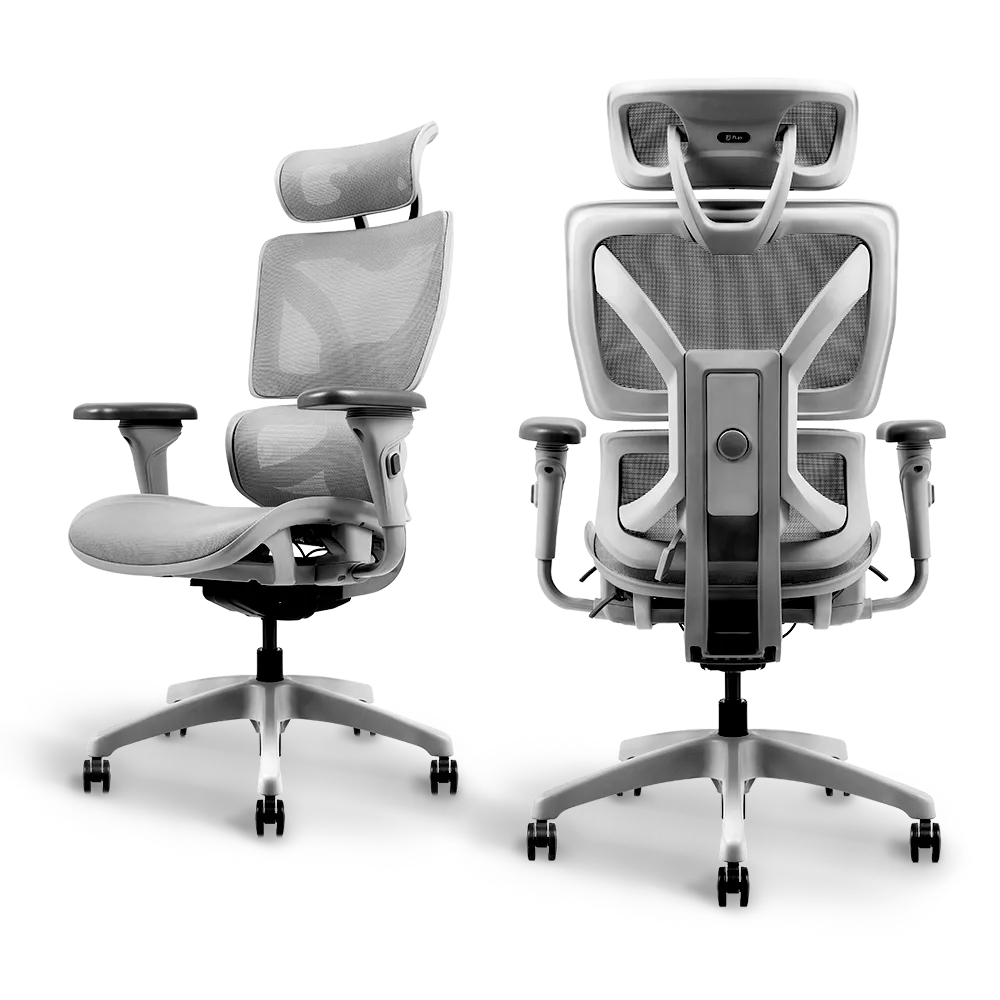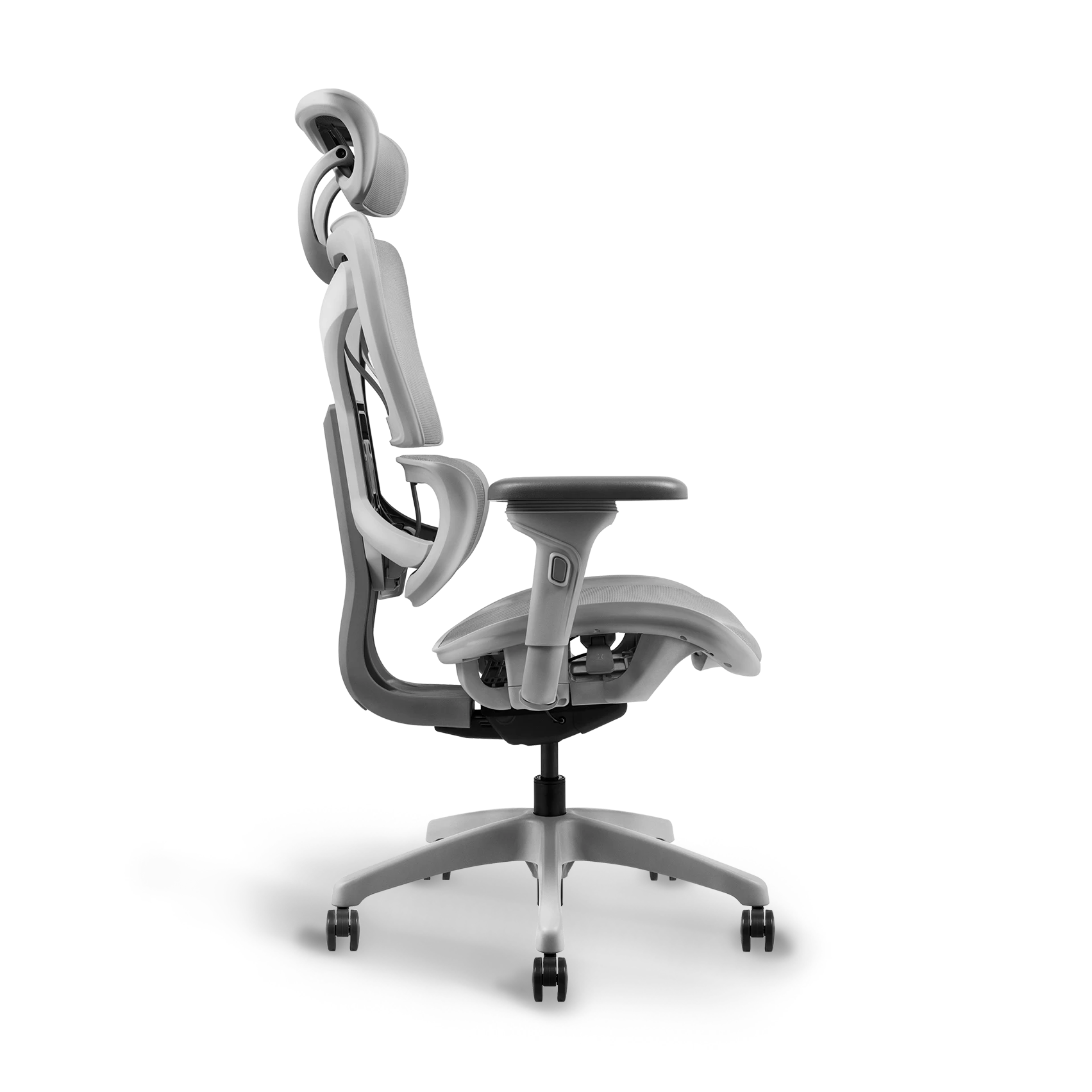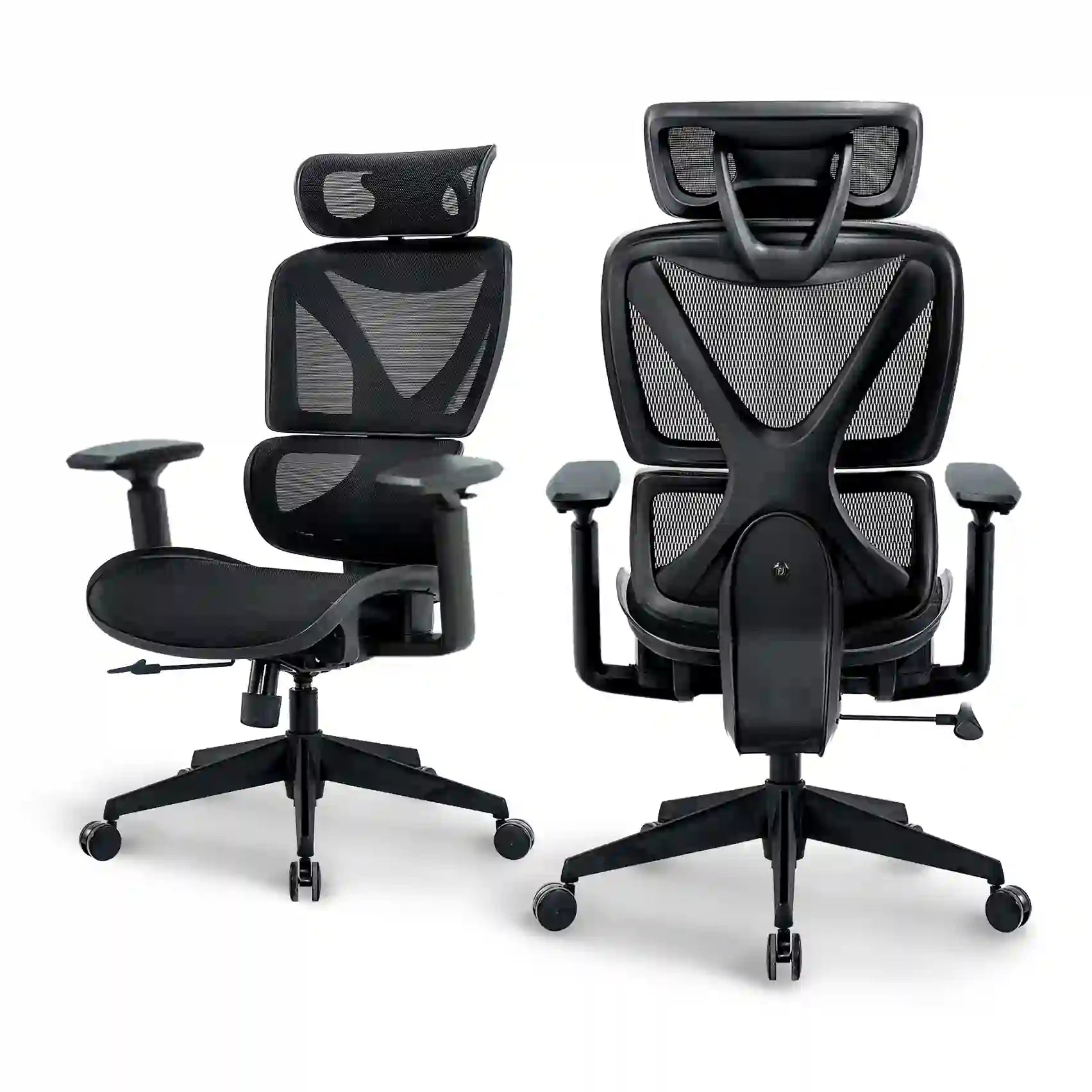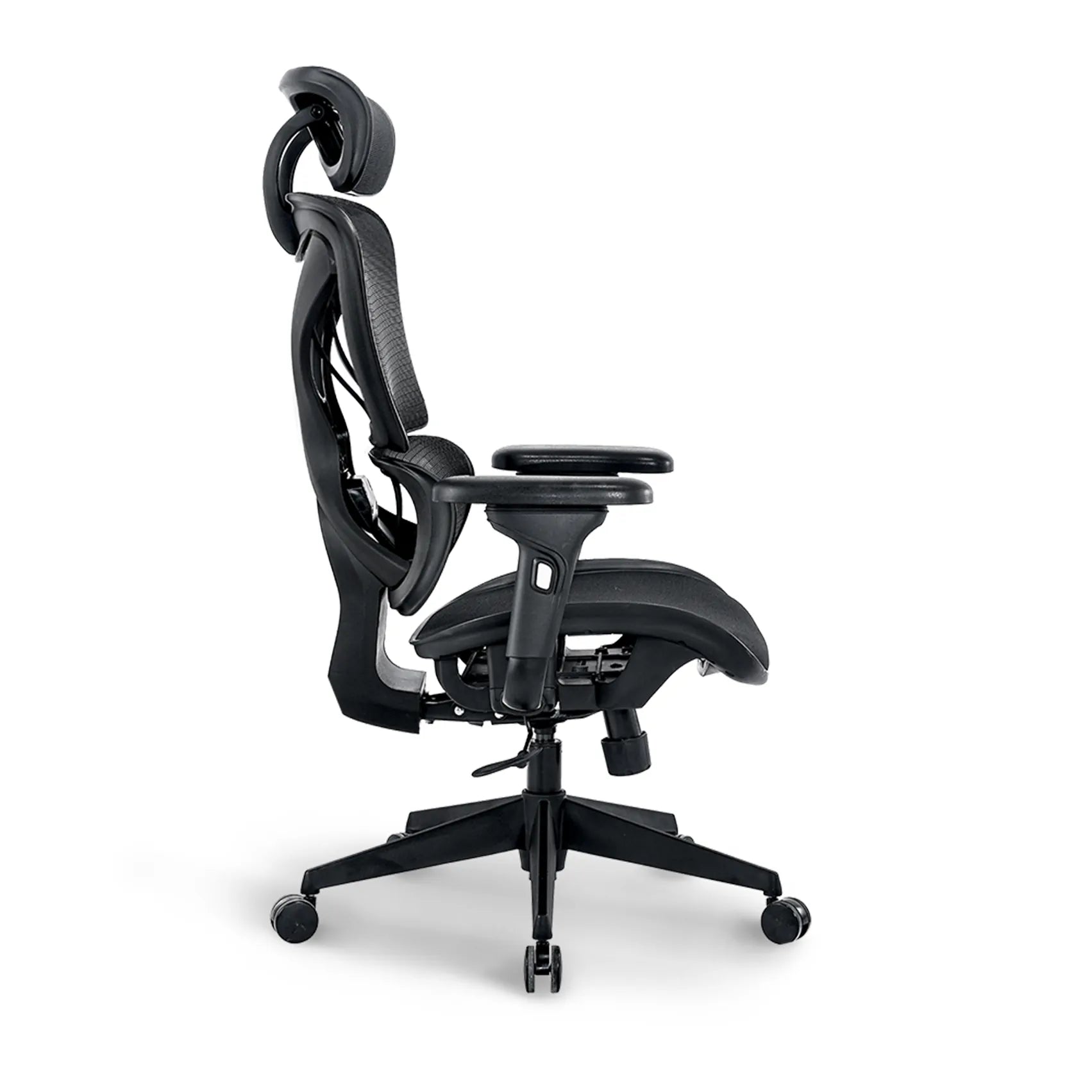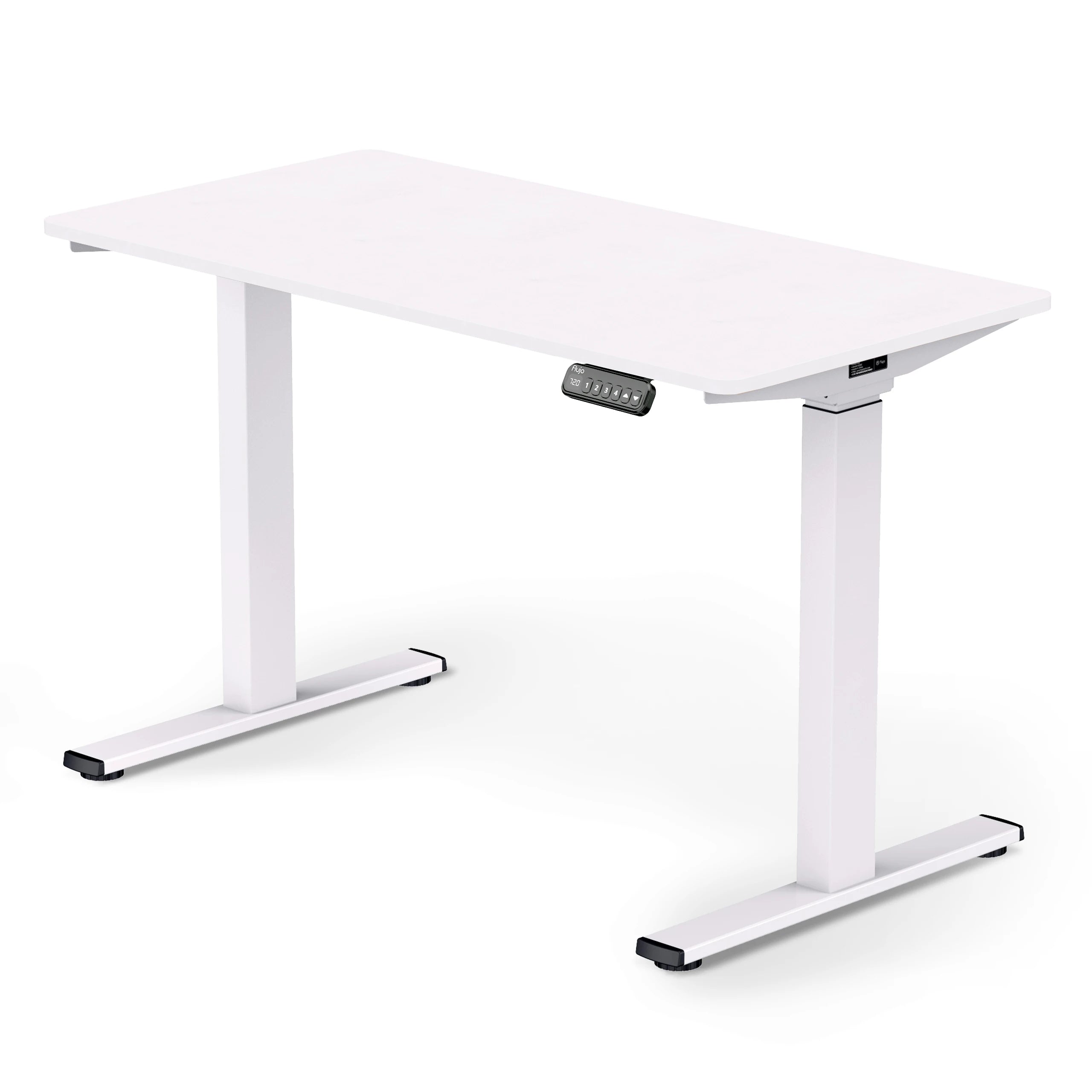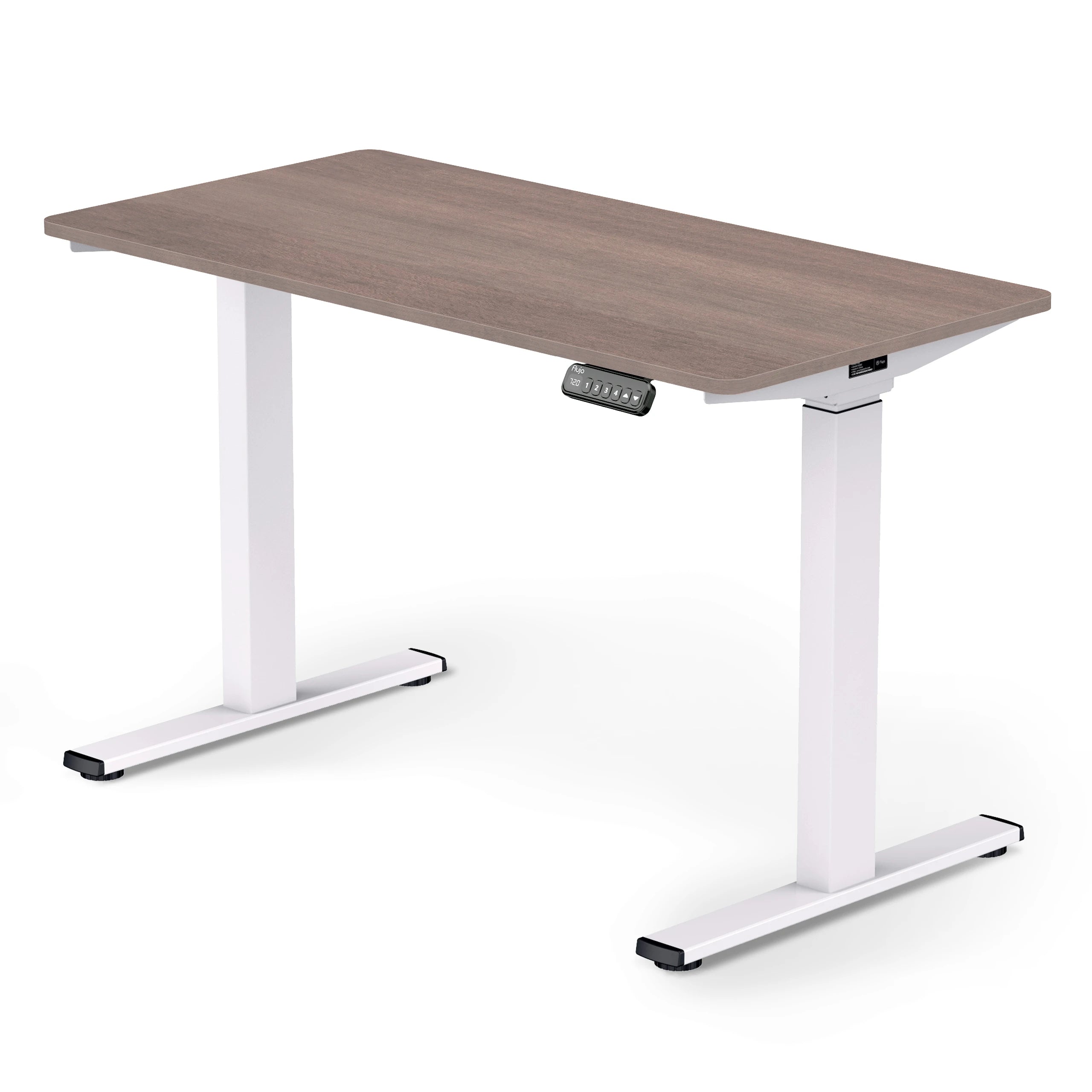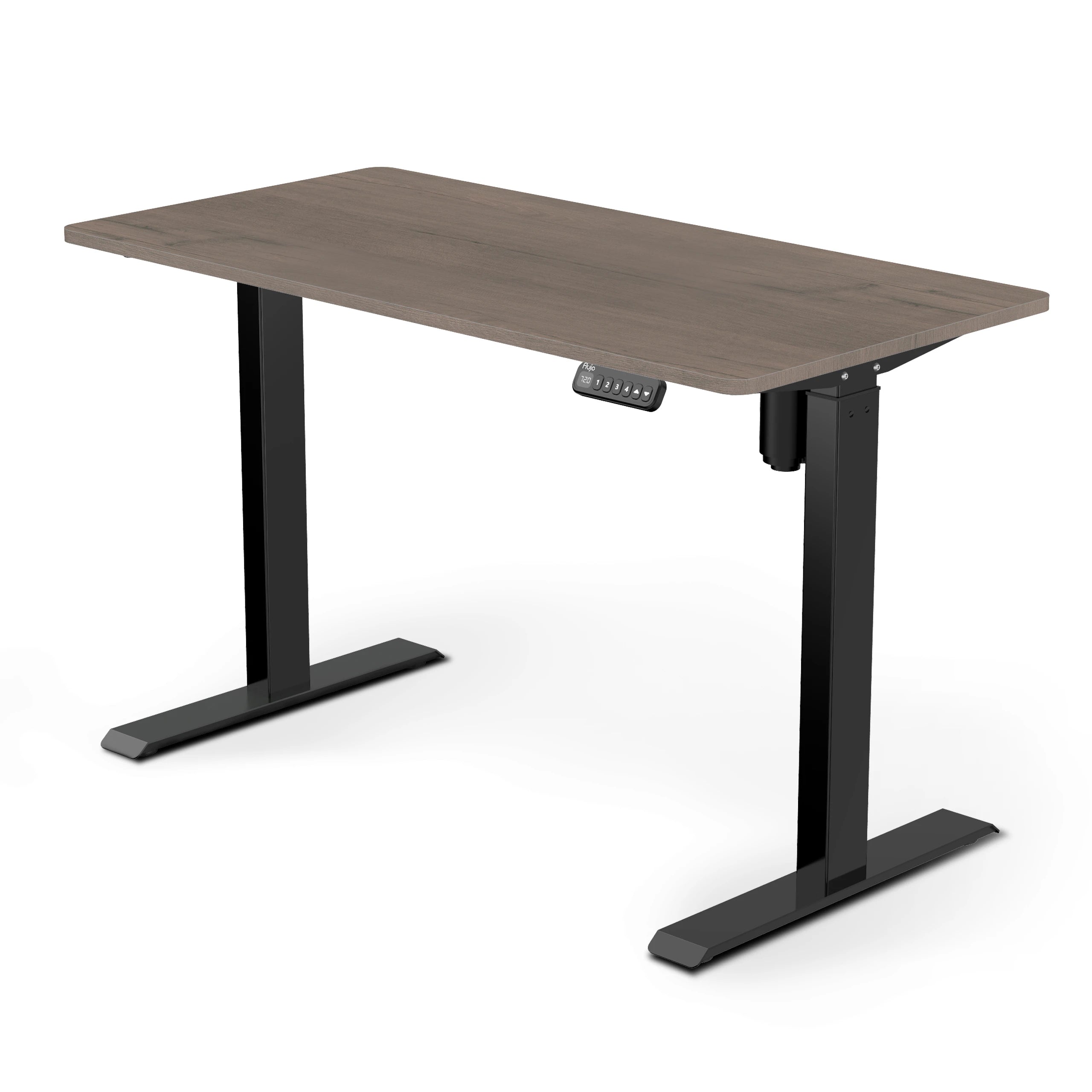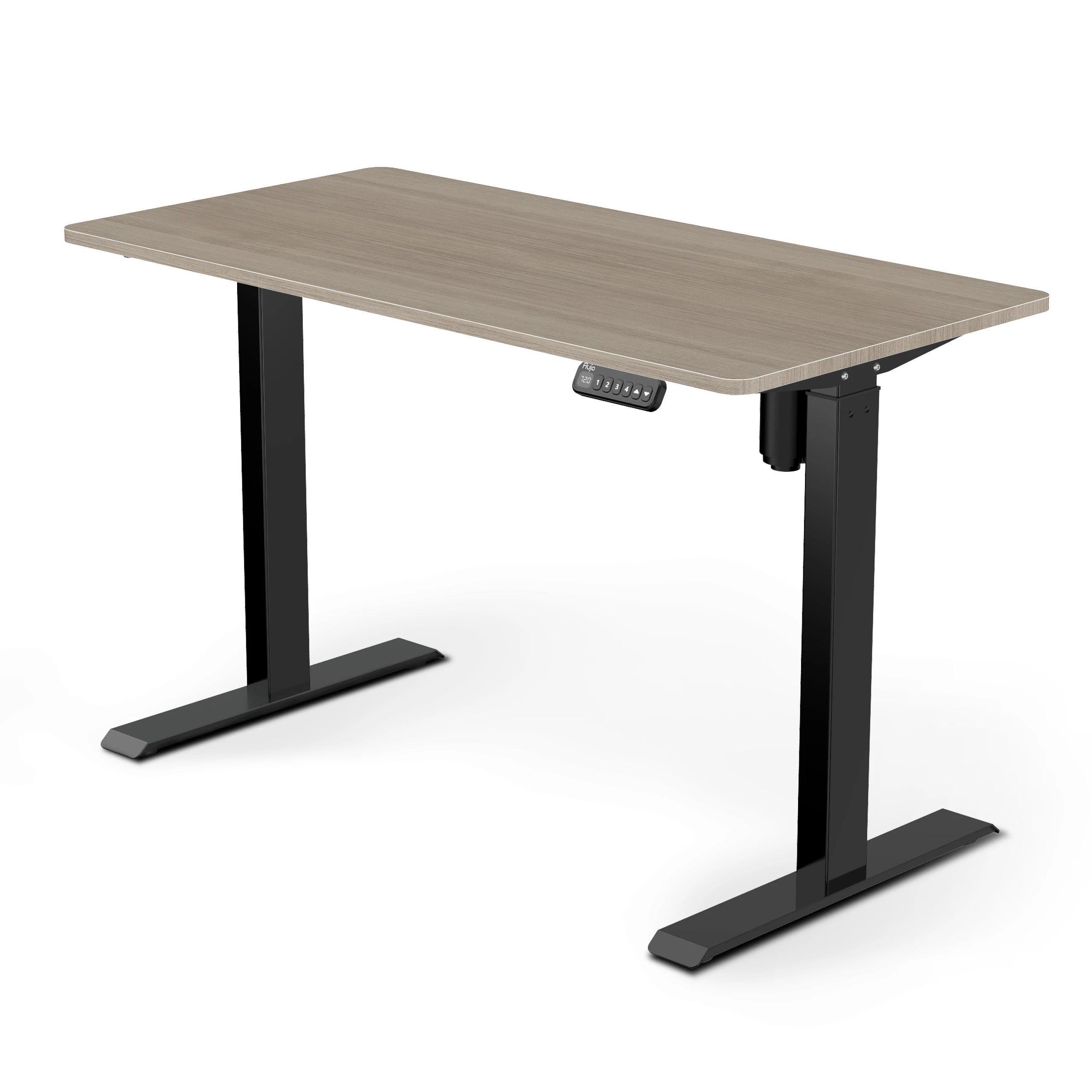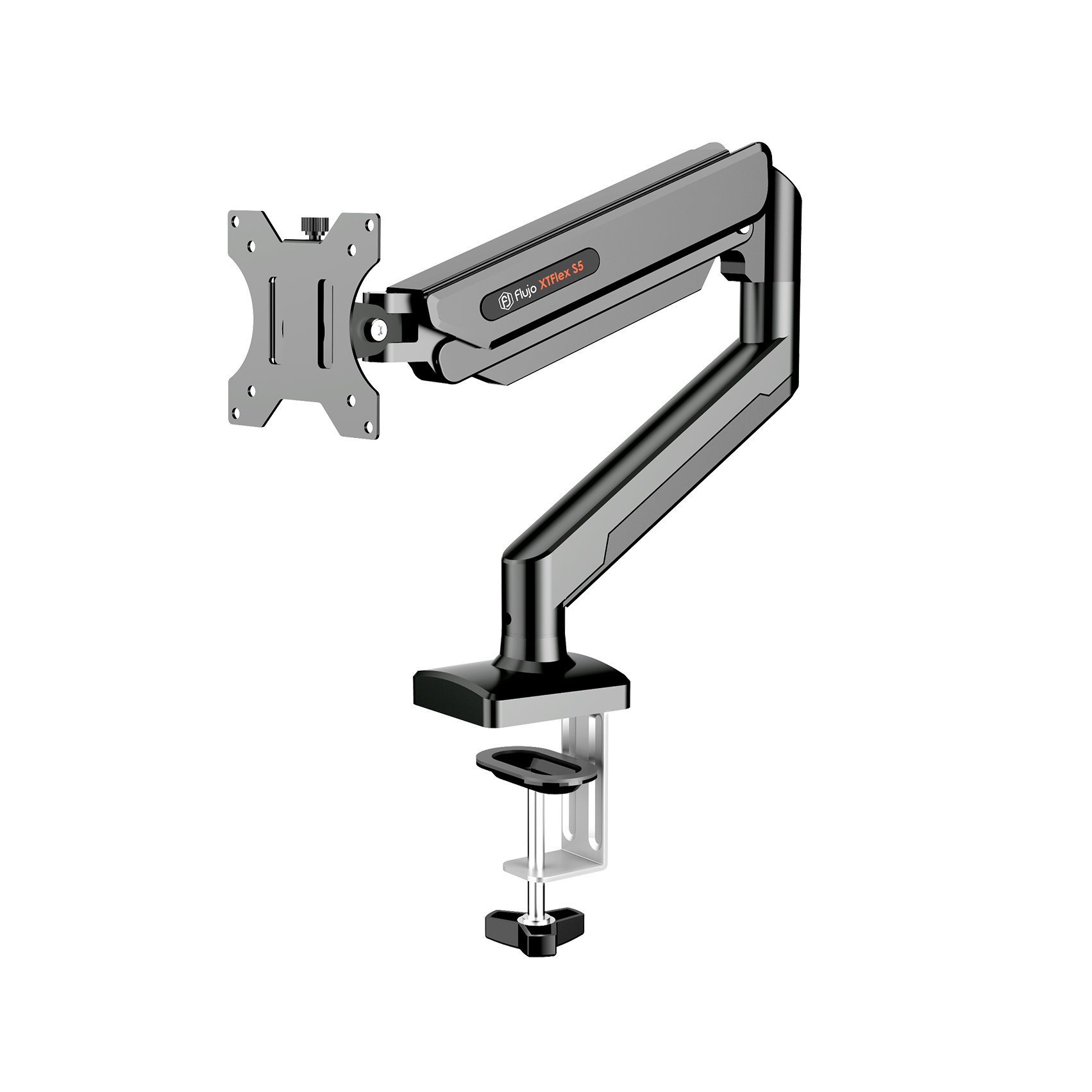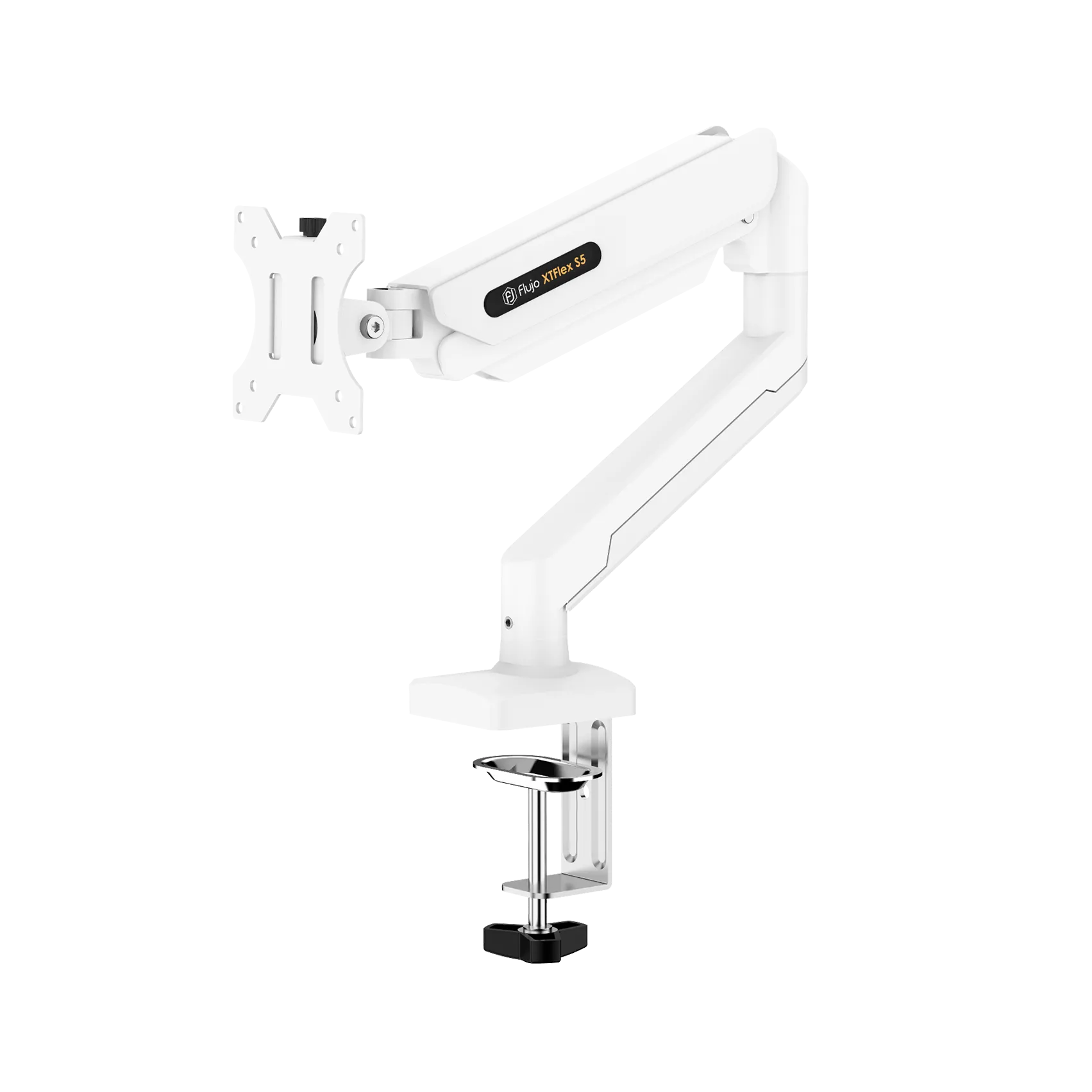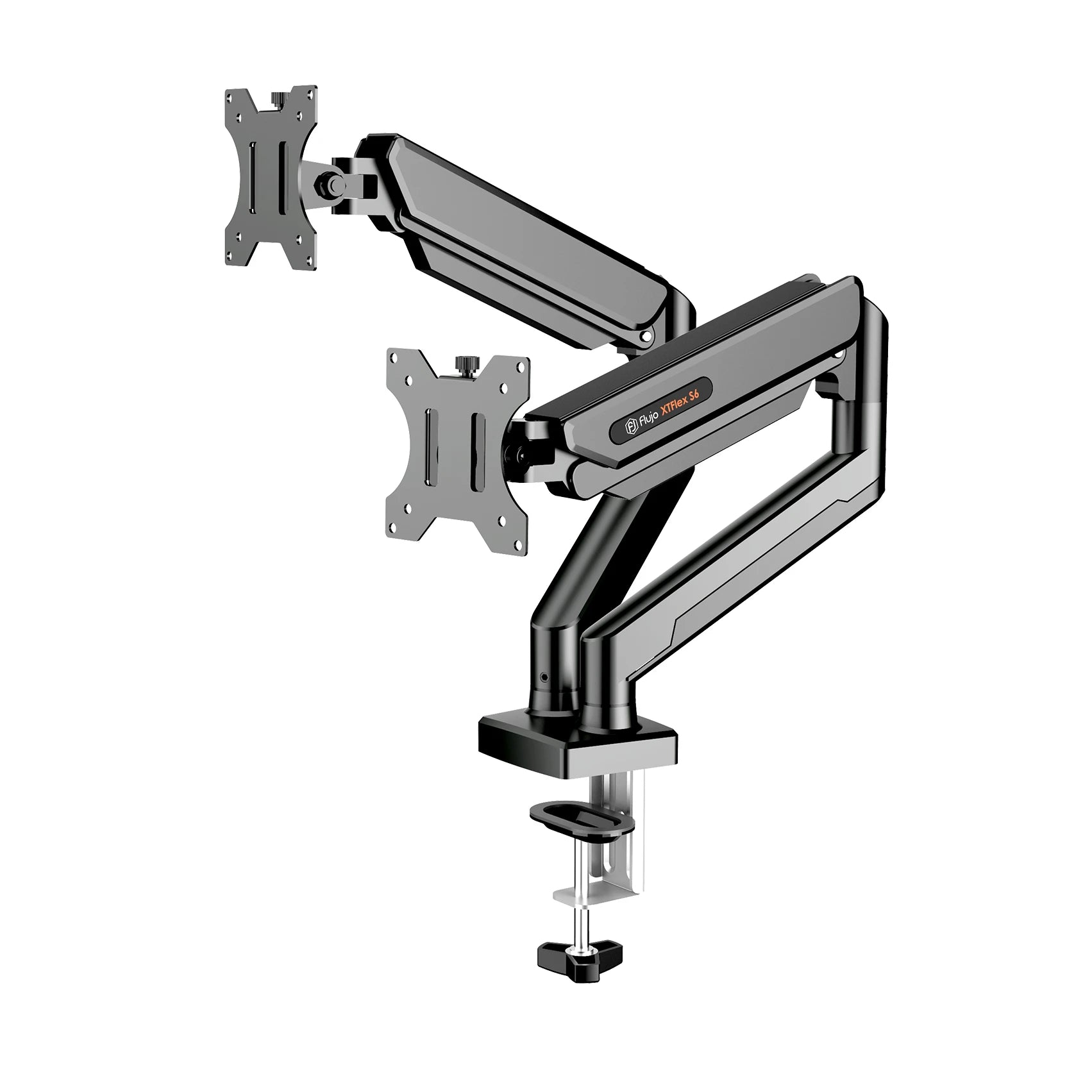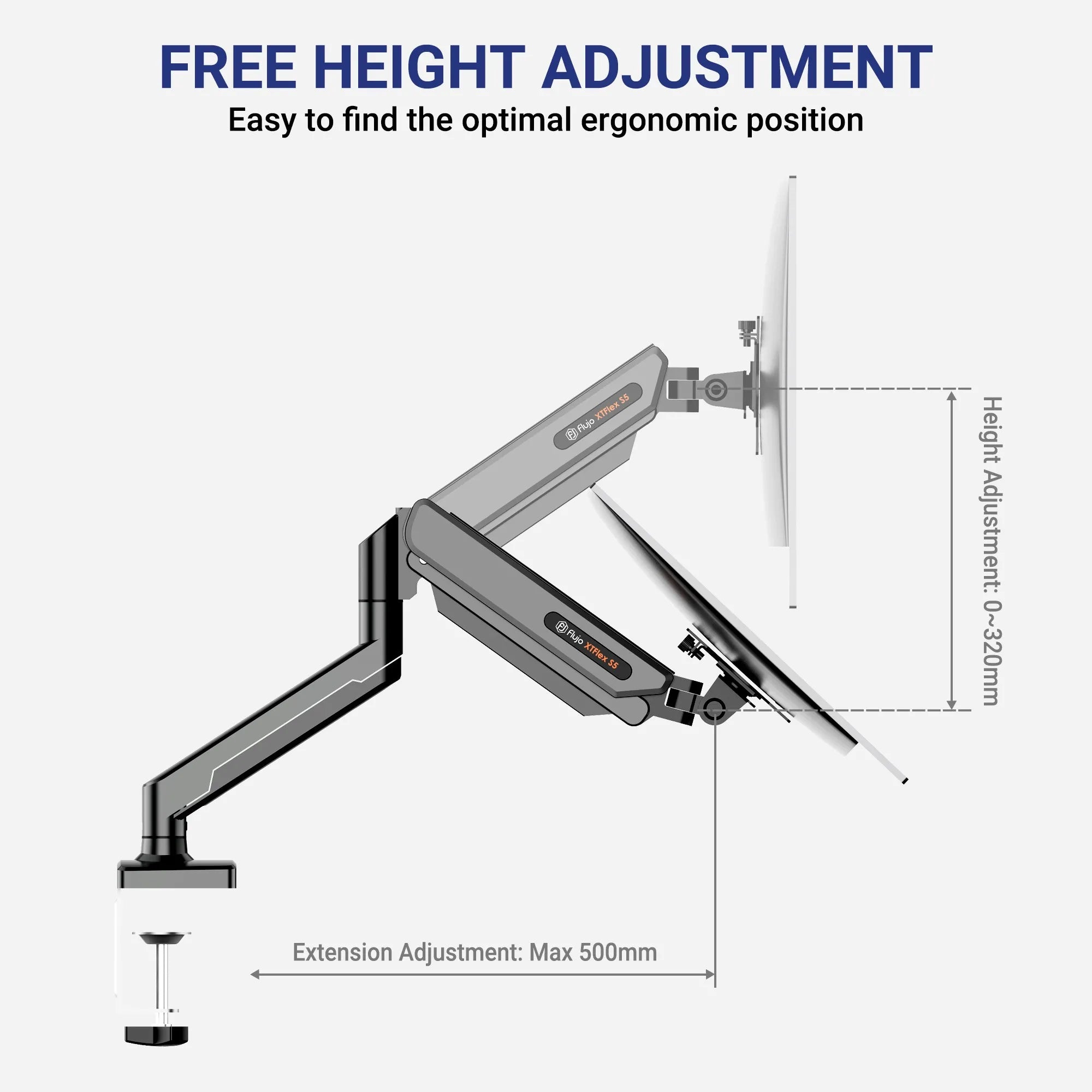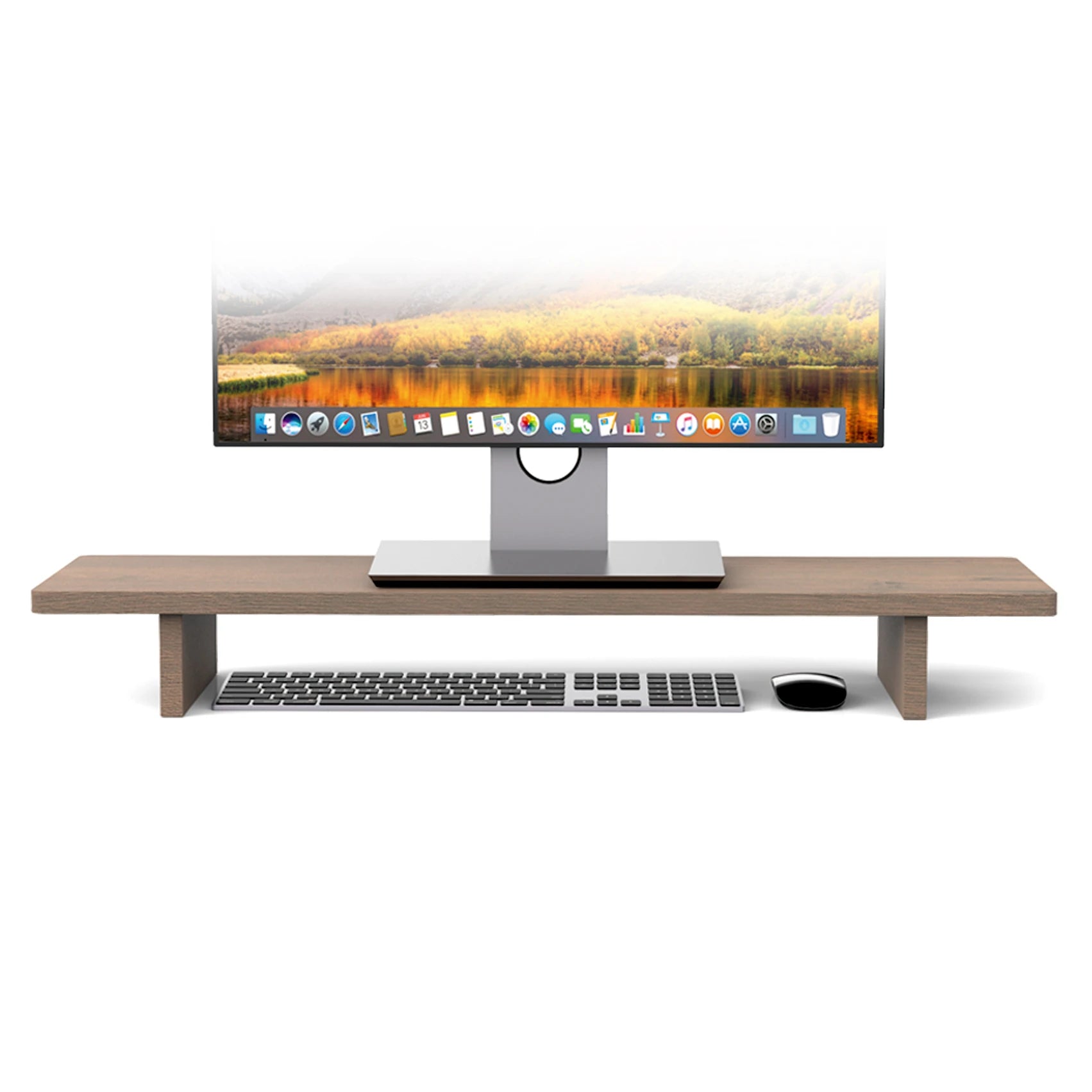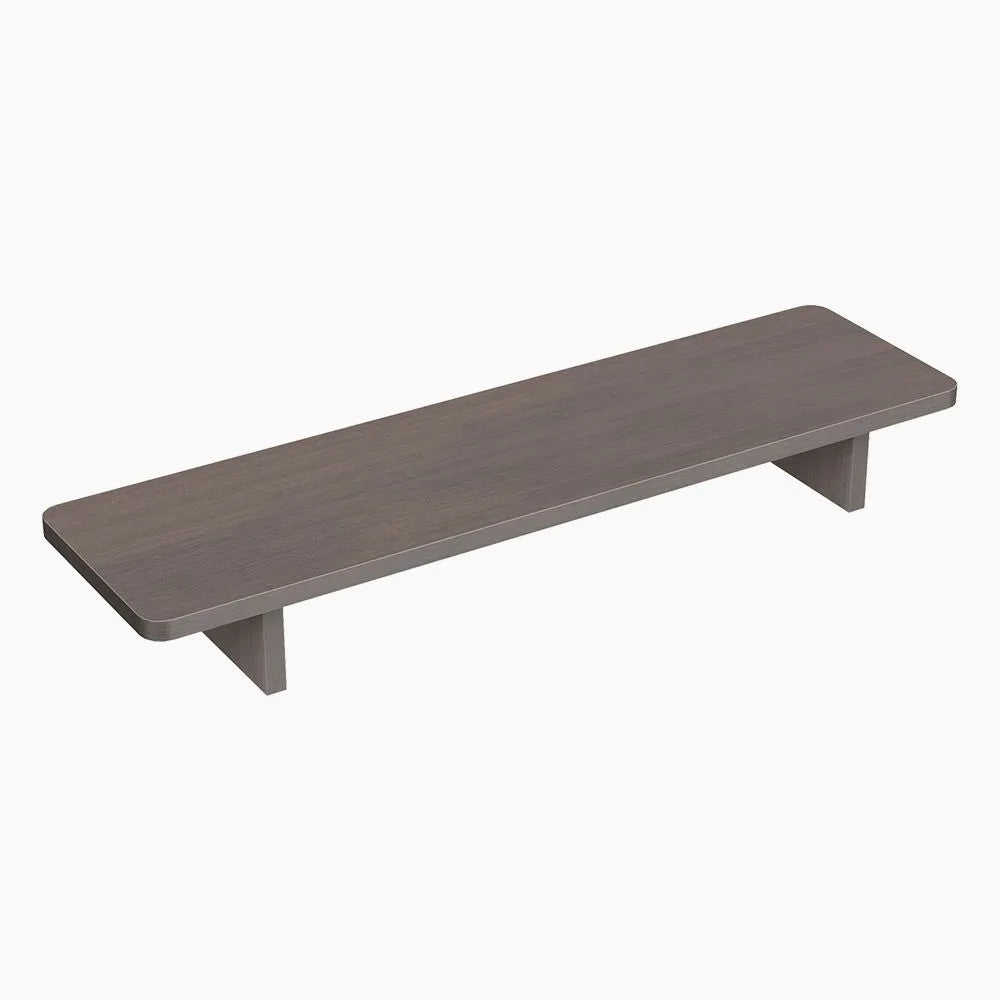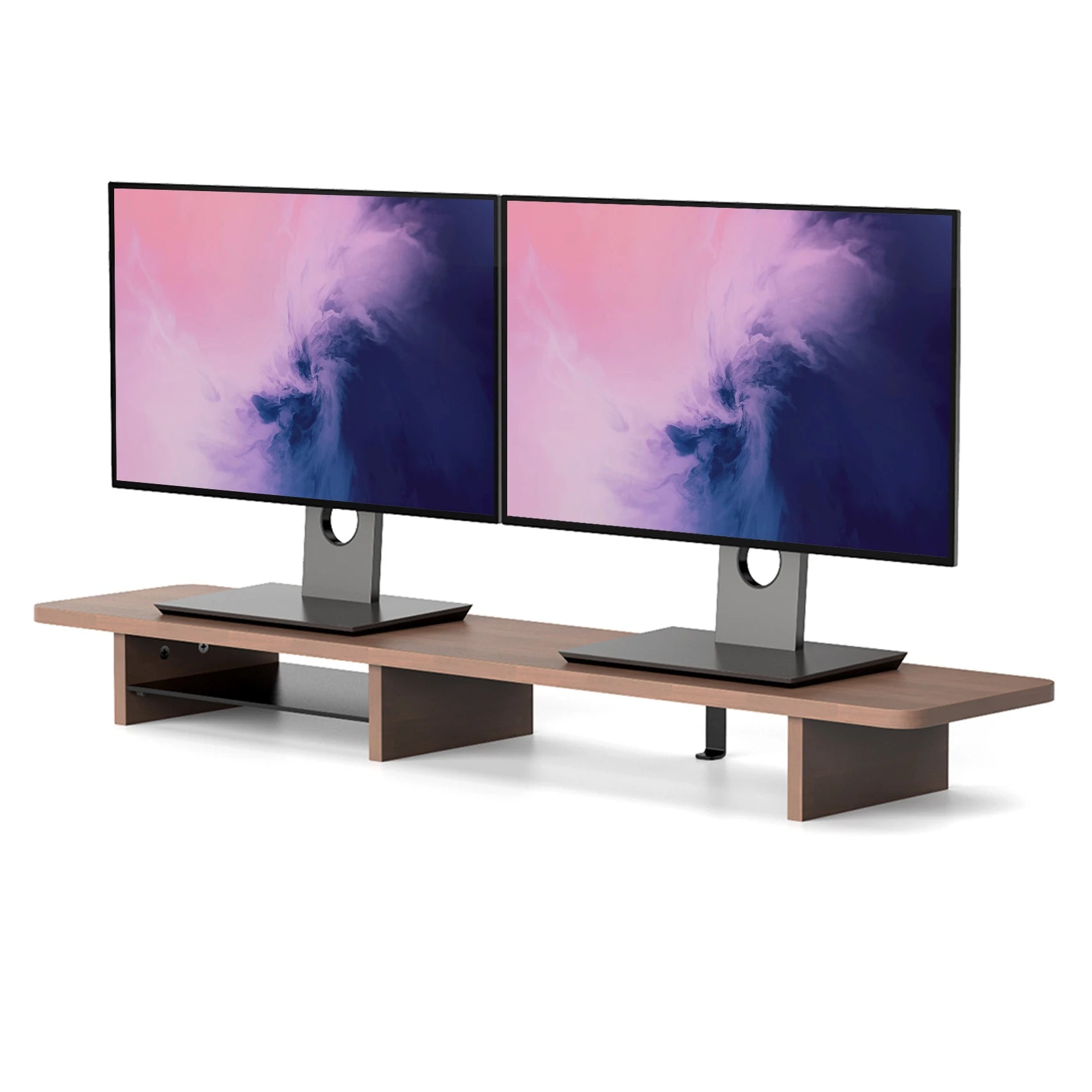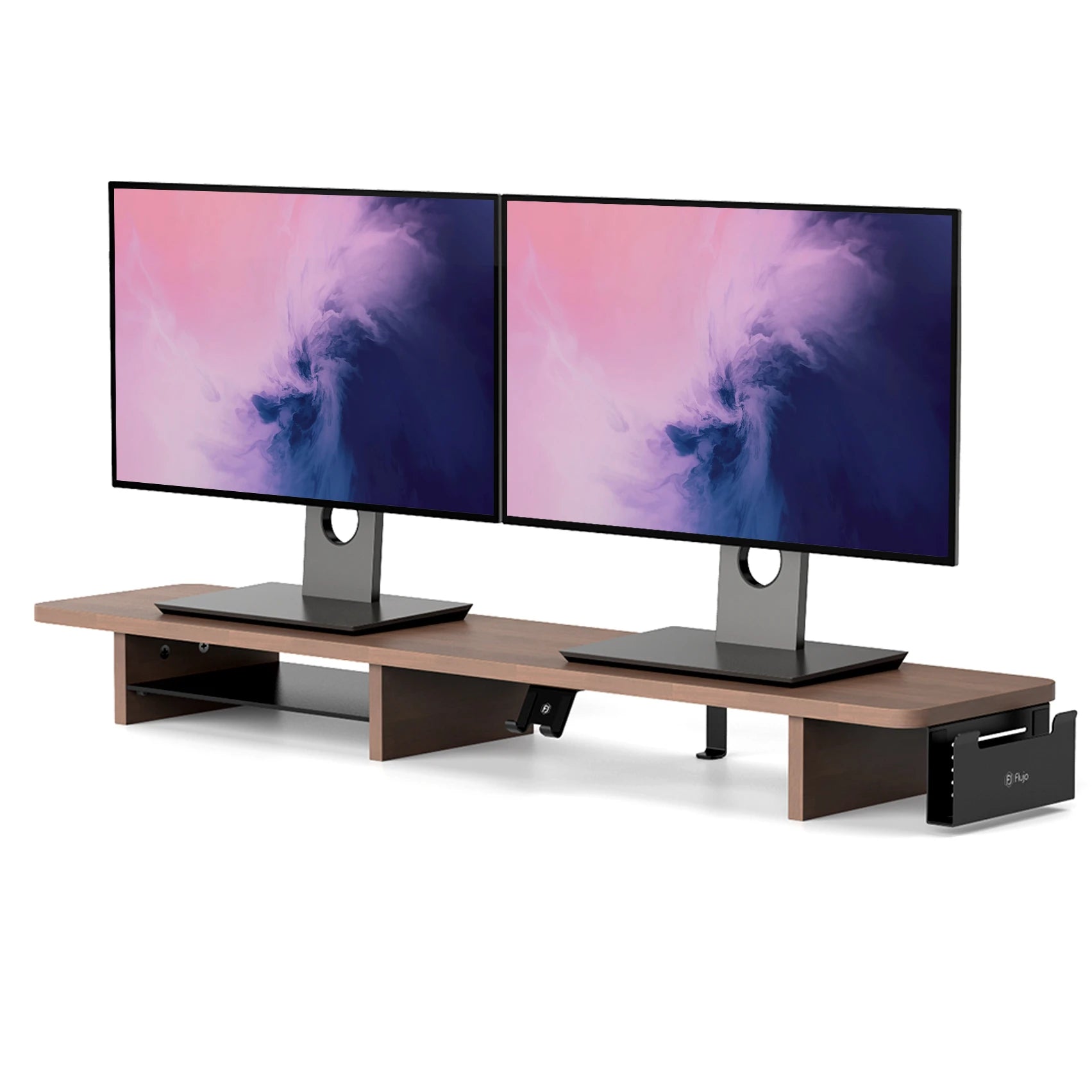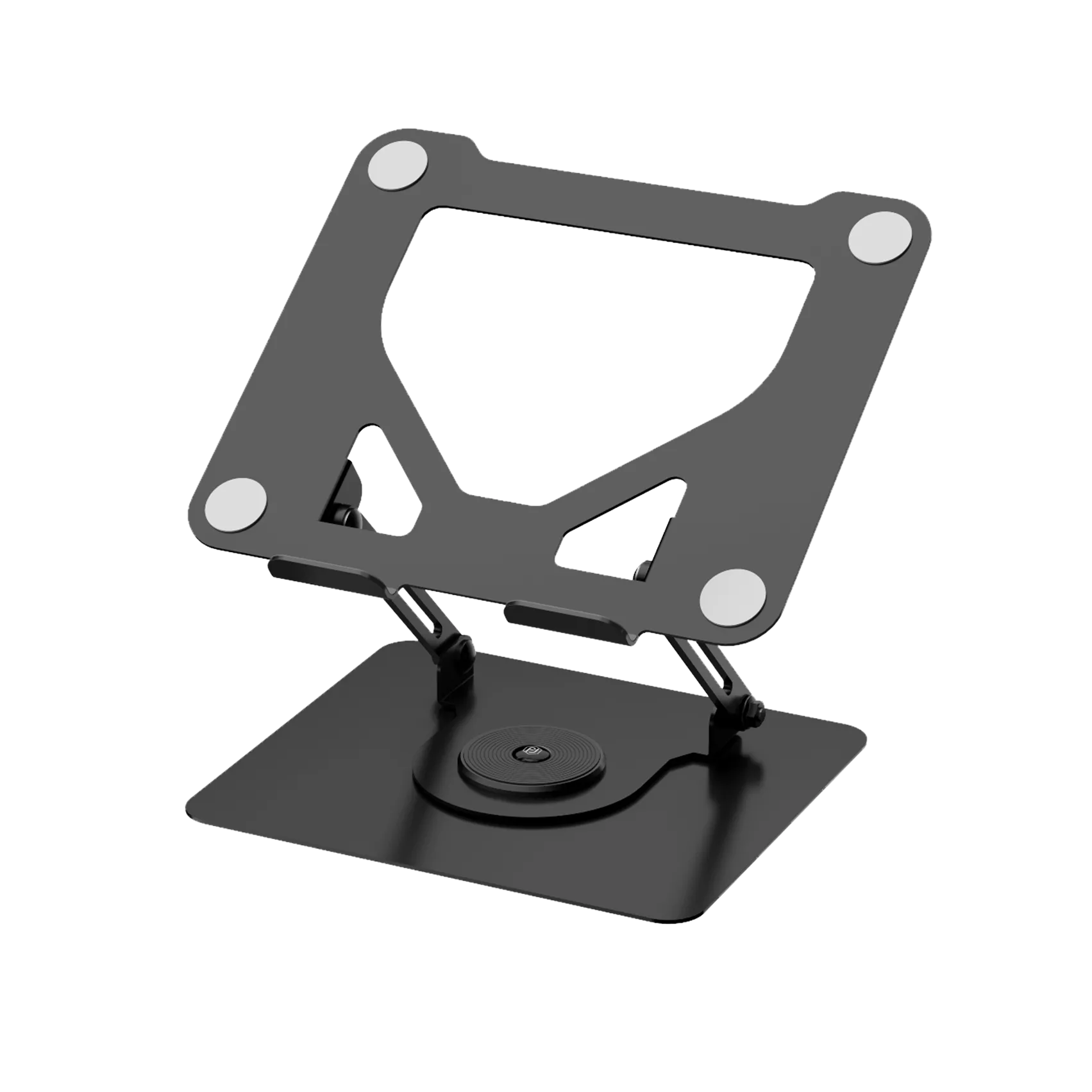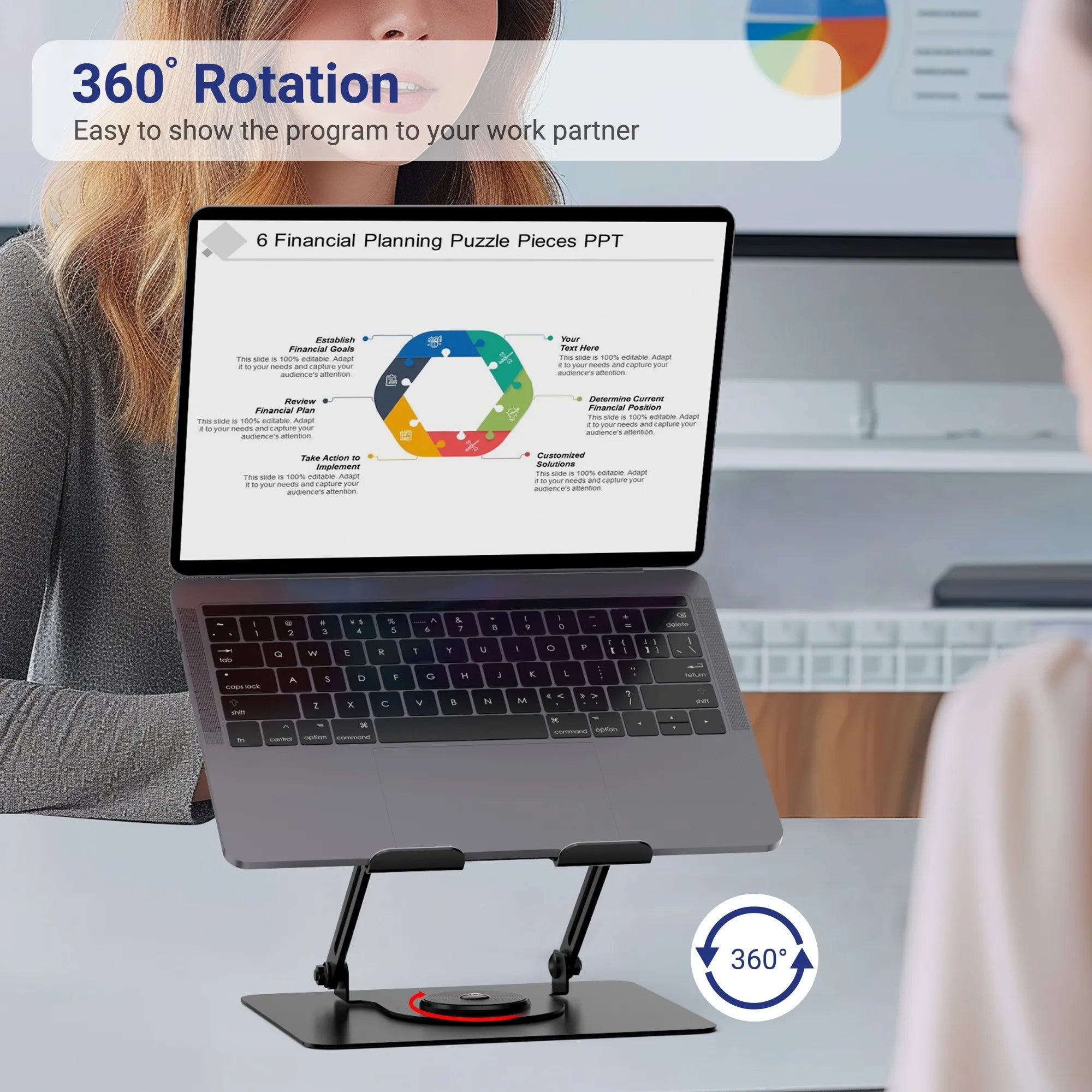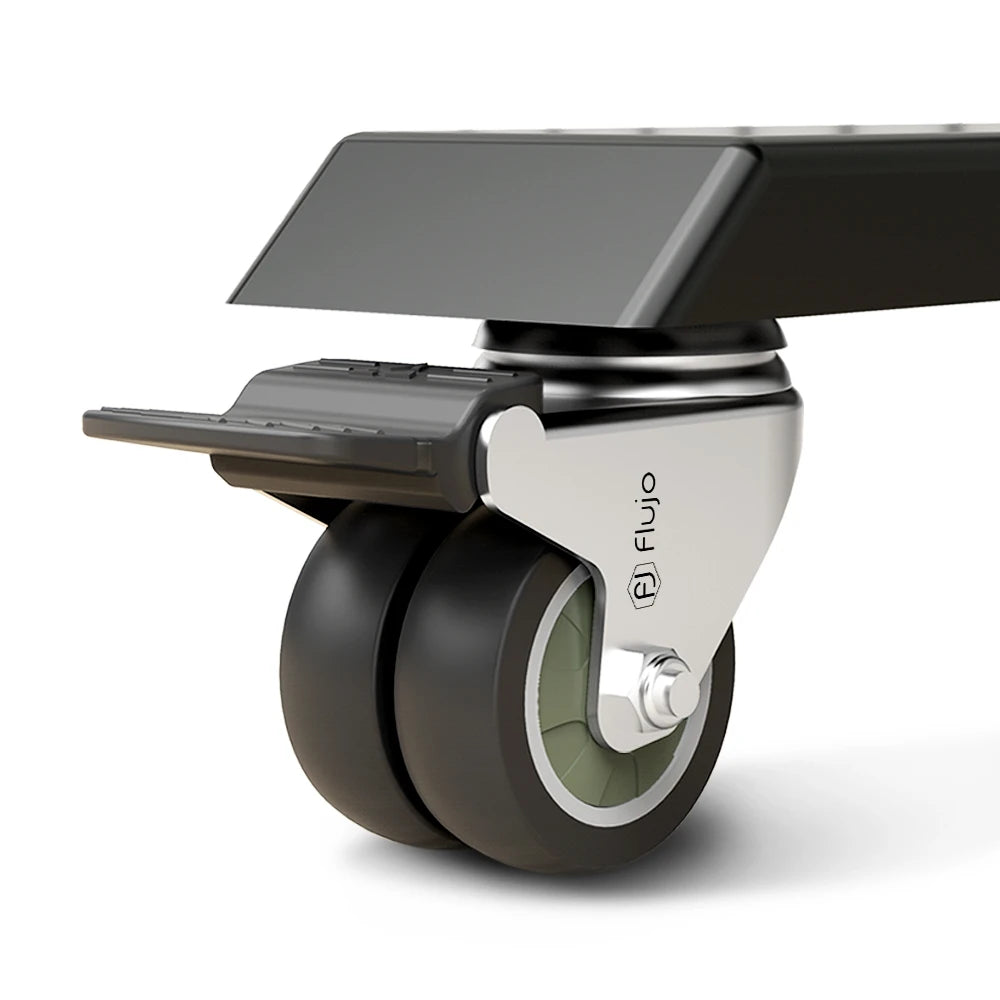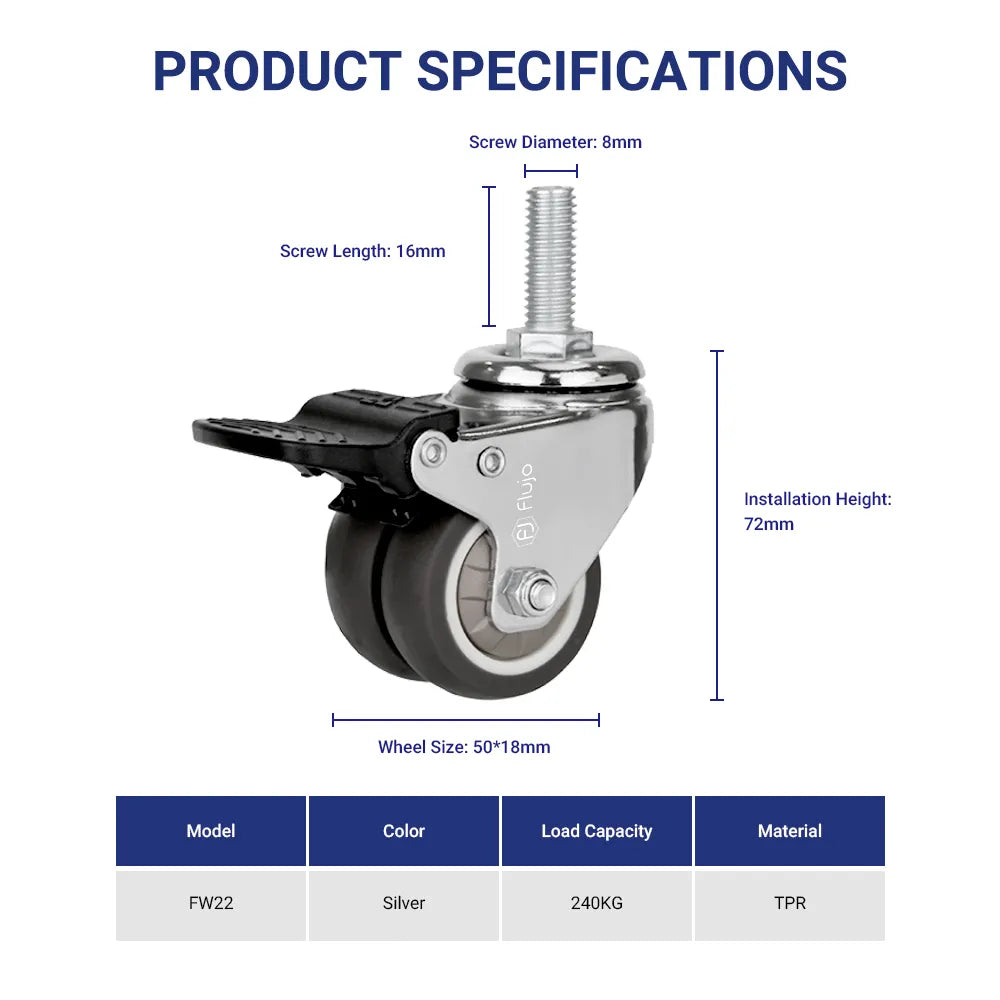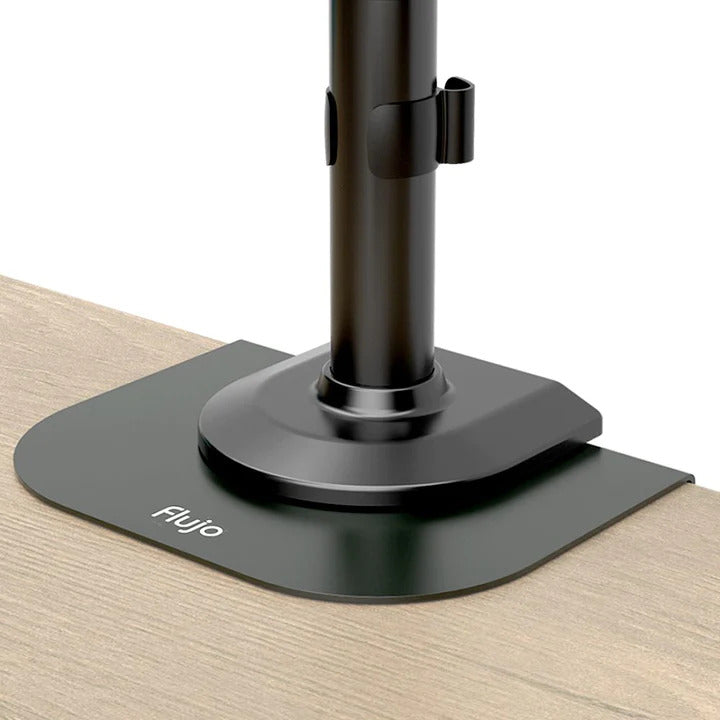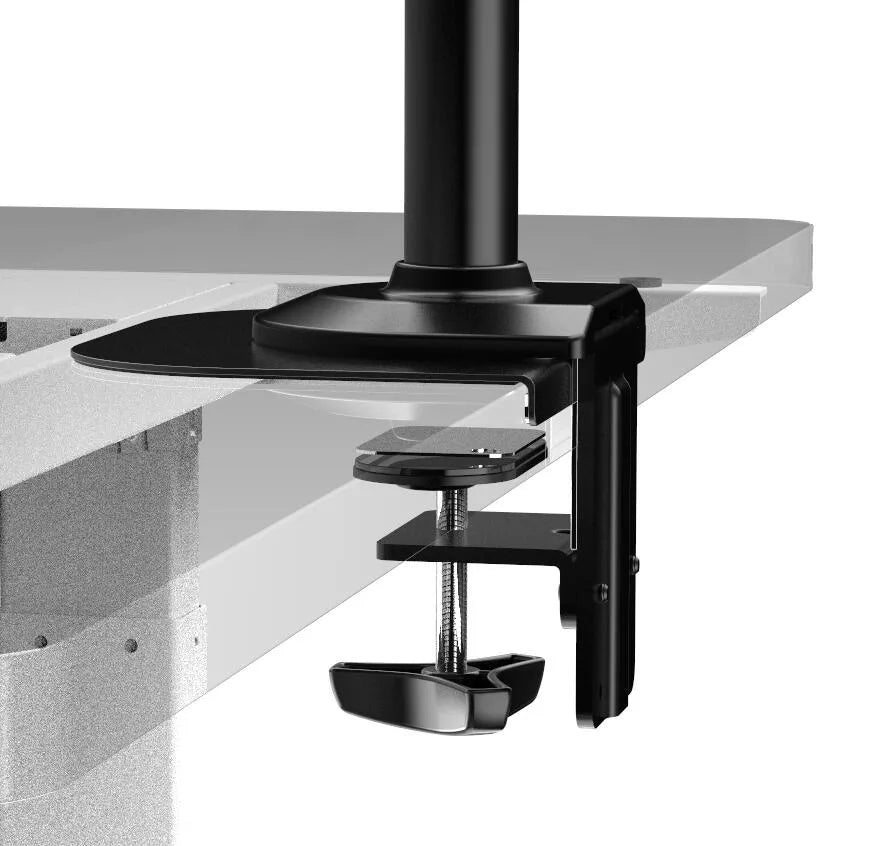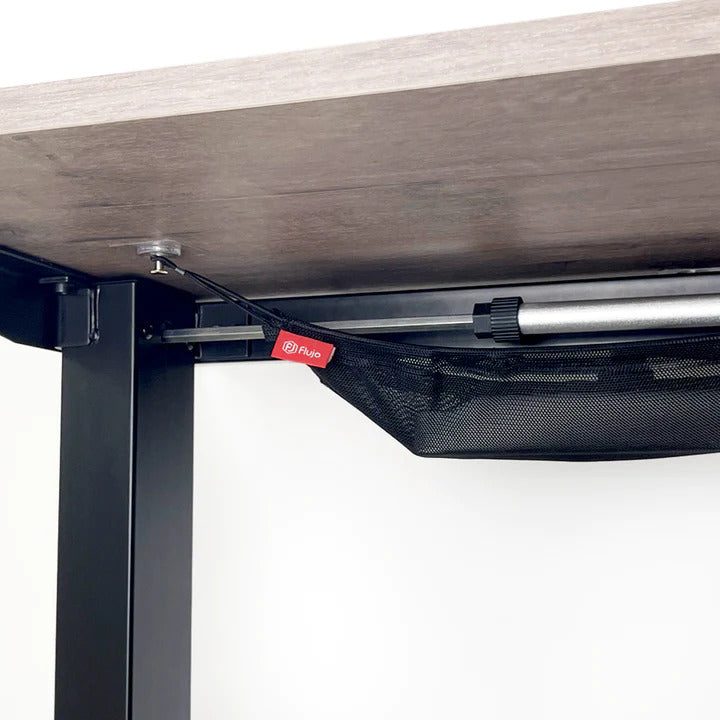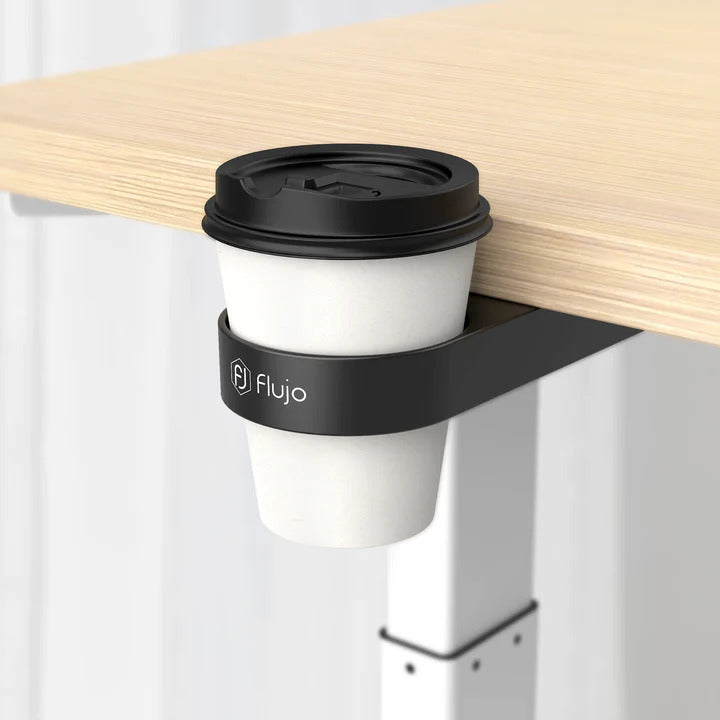Monitor Arms Essentials: Enhancing Comfort and Efficiency in Modern Workspaces
Elevating Workspace Ergonomics with Monitor Arms
In the era of digital workspaces, where screens dominate our visual landscape, the significance of a monitor arm is often understated yet paramount. A monitor arm, more than just a mere accessory, is a pivotal element in creating an ergonomic and efficient workspace.
As we delve into this comprehensive guide, we will explore the multifaceted role of monitor arms in modern work environments. From ensuring that your monitor is at the ideal eye level to promoting good posture and enhancing overall ergonomic comfort, monitor arms offer a simple yet effective solution to several workplace challenges.
Whether you are working from a bustling office or a quiet corner of your home, understanding how to optimize your space with a monitor arm can lead to a marked improvement in both comfort and productivity. Join us as we unravel the benefits and necessities of integrating monitor arms into your daily work setup.
What is a Monitor Arm?
A monitor arm, fundamentally, is a tool designed to hold a computer screen or monitor in a position that optimizes the user's visual and ergonomic comfort. It is a flexible apparatus that attaches to a desk or a wall and allows the monitor to be positioned at various heights, distances, and angles.
The primary function of a monitor arm is to enable users to adjust their screen to the ideal eye level, which helps in maintaining good posture and reduces the risk of neck and eye strain. But beyond this basic utility, monitor arms come in various forms to cater to diverse needs and setups:
-
Single Monitor Arms: Ideal for standard workstations where one monitor is used. They provide the flexibility to adjust the height and angle of a single screen.
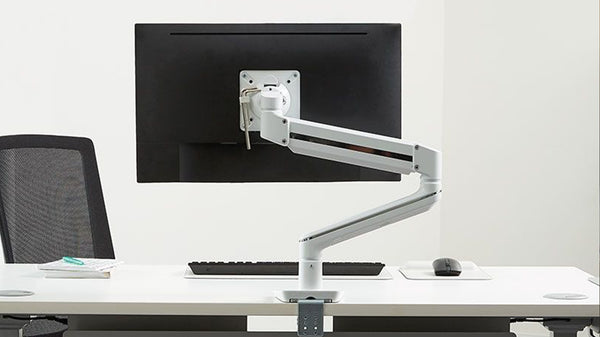
-
Dual or Multiple Monitor Arms: Perfect for professionals who need multiple screens, like graphic designers or programmers. These arms can hold two or more monitors simultaneously, allowing for a seamless multi-screen setup.
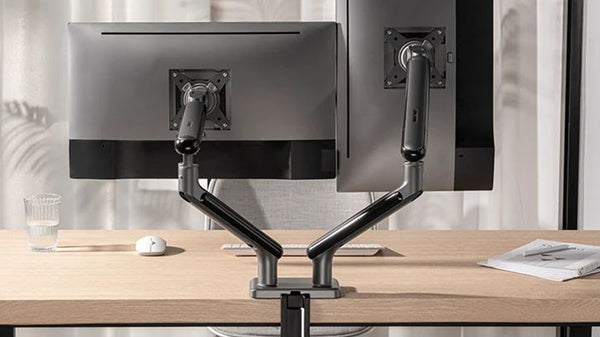
-
Wall-Mounted Arms: These arms are affixed to the wall, offering a space-saving solution while still providing the ergonomic benefits of a traditional desk-mounted arm.
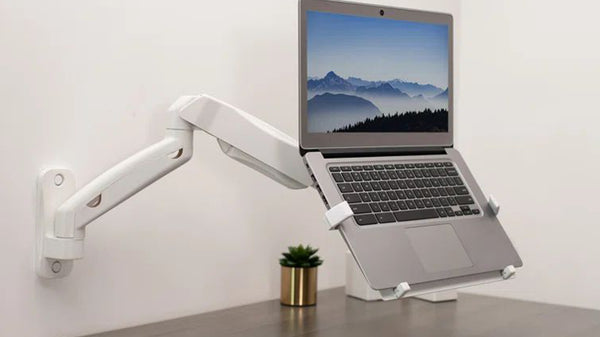
- Sit-Stand Monitor Arms: Designed for use with height-adjustable or standing desks, these arms offer a greater range of motion to accommodate both sitting and standing positions.
Understanding the types of monitor arms and their specific functions is crucial in choosing the right one to enhance your workstation's ergonomic setup. Each variety offers unique benefits, and selecting the appropriate one depends on your workspace requirements, the number of monitors you use, and the level of flexibility you need in positioning your screens.
delves into how these tools contribute to a healthier and more efficient work environment:
- Maintaining Eye Level: A monitor arm allows for easy adjustment of the monitor’s height, ensuring that the top of the screen is at or slightly below eye level. This alignment reduces the need to tilt your head up or down, which can lead to neck strain and discomfort.
- Reducing Neck and Back Strain: By enabling users to position the monitor at an optimal distance and angle, monitor arms help in maintaining a neutral neck position. This is crucial in preventing the neck and back pain often associated with prolonged computer use.
- Promoting Good Posture: With the ability to adjust the screen to the correct height and angle, users are less likely to slouch or lean forward. This aids in maintaining a good posture, which is essential for preventing musculoskeletal problems.
- Enhancing Flexibility and Comfort: Monitor arms offer the flexibility to adjust screens for different tasks, whether it’s tilting for better viewing angles or swiveling to share the screen with someone else. This adaptability contributes to greater comfort throughout the workday.
- Supporting Sit-Stand Workstations: For those using sit-stand desks, monitor arms are particularly beneficial. They can be easily adjusted as the user transitions between sitting and standing positions, maintaining ergonomic screen positioning in both scenarios.
- Eye Strain Reduction: Proper monitor positioning also reduces the likelihood of eye strain. By allowing for adjustments in screen distance and angle, monitor arms help in finding the ideal setup where the screen is neither too close nor too far, reducing the strain on the eyes.
Incorporating a monitor arm into your workspace setup is, therefore, not just a matter of convenience but a significant step towards ensuring ergonomic integrity in your work environment. This adoption can lead to noticeable improvements in physical comfort, potentially enhancing overall health and productivity.
Improving Workspace Efficiency and Flexibility
The incorporation of monitor arms into a workspace goes beyond ergonomic benefits; it significantly enhances the efficiency and flexibility of the work environment.
-
Maximizing Desk Space: Monitor arms lift screens off the desk surface, freeing up valuable workspace. This additional space can be used more effectively for other tasks, creating a cleaner and more organized work area.
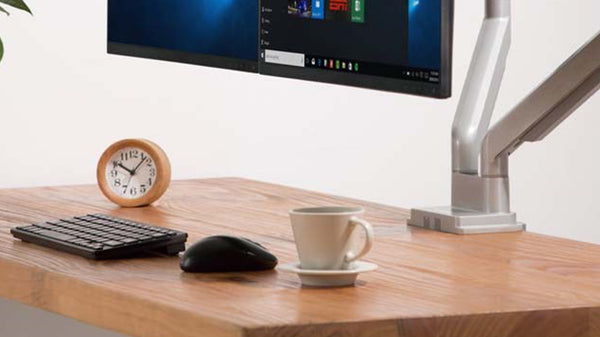
- Adapting to Multiple Tasks: The flexibility of monitor arms allows users to easily adjust their screens for various activities. Whether it's tilting the monitor for better viewing while data crunching, swiveling it to collaborate with a colleague, or adjusting its position for a video conference, monitor arms make these transitions seamless.
-
Enhancing Multi-Monitor Efficiency: For workstations with multiple monitors, monitor arms can be a game-changer. They allow for easy positioning of multiple screens in an optimal layout, which is essential for jobs that require extensive screen time, such as programming, financial analysis, or graphic design. This setup not only improves the efficiency of working with multiple screens but also ensures that each screen is at the correct ergonomic position.
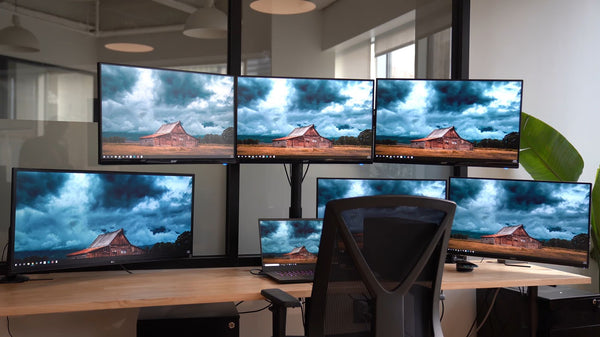
- Personalizing Workspace for Different Users: In shared work environments or hot-desking situations, monitor arms provide the flexibility to adjust the monitor setup according to the preferences of different users. This adjustability is crucial in a shared workspace, ensuring that each individual can set up their workstation in a way that suits their ergonomic needs.
- Reducing Clutter and Enhancing Aesthetics: Monitor arms contribute to a neater and more streamlined workspace. By eliminating the need for traditional monitor stands, they aid in reducing clutter on the desk, contributing to a more visually appealing and professionally organized workspace.
By enhancing the flexibility and efficiency of the workspace, monitor arms play a crucial role in optimizing work performance and maintaining an orderly and ergonomic office environment.
Integrating Monitor Arms into Various Work Environments
Monitor arms are versatile tools that can be integrated into a wide range of work environments, each with its unique requirements and challenges. This versatility makes them an invaluable asset in various settings:
- Home Offices: With the rise in remote work, creating an ergonomic workspace at home is crucial. Monitor arms allow for the customization of the home office setup, enabling remote workers to adjust their screens to the most comfortable position, irrespective of the desk or room constraints.
- Corporate Offices: In a traditional office setting, monitor arms can help in maintaining a uniform and professional look while providing each employee the flexibility to adjust their monitor to their ergonomic needs. This adaptability is especially beneficial in offices where hot desking is common, as they allow for quick and easy adjustments for different users.
- Gaming Setups: Gamers often use multiple monitors for an immersive experience. Monitor arms in gaming setups offer the flexibility to position screens at the optimal angle and distance, enhancing the gaming experience while also caring for the gamer’s posture and eye health.
- Design and Editing Workstations: Professionals in fields like graphic design, video editing, and architecture often rely on precise screen positions for their detailed work. Monitor arms in these environments not only facilitate optimal screen placement for detailed tasks but also allow for easy switching between different tasks and applications.
- Financial and Trading Desks: In finance and trading, where multiple screens are a necessity, monitor arms provide a way to organize and adjust numerous monitors in a coherent setup, ensuring all critical information is visible and easily accessible.
- Educational and Research Settings: For educators and researchers, monitor arms can facilitate a more interactive and flexible use of screens, whether it's for teaching, presentations, or data analysis.
In each of these environments, monitor arms contribute significantly to creating a workspace that is both ergonomically sound and conducive to the specific tasks at hand. They are a simple yet effective solution to a variety of workspace challenges, making them a valuable addition to any work setting.
Choosing the Right Monitor Arm: Key Considerations
Selecting the appropriate monitor arm for your workspace involves more than just picking a model; it requires a careful assessment of your needs, workspace, and the specific features of the monitor arm. Here are key considerations to guide you in choosing the right monitor arm:
- Compatibility with Monitor Size and Weight: Ensure that the monitor arm can support the size and weight of your monitor. Check the specifications of both the arm and your monitor to guarantee a safe and stable setup.
- Range of Motion: Consider the types of adjustments you need. Do you require an arm that can swivel, tilt, or rotate your monitor? The range of motion is crucial for achieving the optimal viewing angle and for sharing your screen with others.
- Desk Mounting Options: Monitor arms offer various mounting options such as clamp, grommet, or wall mount. Your choice should align with your desk’s design and the available space. Clamp mounts are versatile for most desk types, while grommet mounts offer a more permanent solution.
-
Adjustability and Ergonomics: Look for an arm that allows easy adjustability in height and depth. This flexibility is key in achieving the correct eye level and distance from the monitor, which are essential for maintaining good posture and ergonomics.

- Cable Management Features: A good monitor arm should help keep cables organized and out of sight. This not only contributes to a cleaner workspace but also prevents cable damage.
- Build Quality and Material: The durability and sturdiness of the monitor arm are important, especially if you plan to adjust it frequently. High-quality materials ensure longevity and consistent performance.
- Ease of Installation and Adjustment: Consider how easy it is to install and adjust the monitor arm. A user-friendly design that allows for quick and hassle-free setup and adjustments is preferable.
- Aesthetic Appeal: While functionality is paramount, the aesthetic aspect of the monitor arm should not be overlooked. Choose a style and color that complements your workspace.
By taking these factors into account, you can choose a monitor arm that not only meets your ergonomic needs but also enhances the functionality and aesthetics of your workspace. Remember, the right monitor arm is a crucial tool in creating a comfortable, efficient, and ergonomically sound work environment.
Long-Term Health Benefits and Productivity Gains
Investing in a quality monitor arm brings substantial long-term health benefits and boosts productivity, making it a wise choice for any workstation. Here's how a well-chosen monitor arm can make a lasting positive impact:
- Reduced Risk of Neck and Back Problems: By allowing you to position your monitor at the optimal height and angle, a monitor arm helps maintain a natural and comfortable posture. This reduces the strain on your neck and back, thereby lowering the risk of developing chronic pain and musculoskeletal disorders.
- Enhanced Eye Health: A monitor arm helps in positioning the screen at an appropriate distance and angle, reducing eye strain. This is crucial for preserving eye health, especially when you spend long hours in front of the screen.
- Improved Focus and Concentration: With the monitor positioned ergonomically, you're less likely to be distracted by discomfort. This improved comfort leads to better focus and concentration on work tasks, enhancing overall productivity.
- Increased Workspace Efficiency: Monitor arms free up desk space, leading to a more organized and less cluttered workspace. A tidy workspace has been linked to higher efficiency and reduced stress levels.
- Adaptability to Changing Needs: As your work demands evolve, a monitor arm's flexibility allows you to adjust your setup accordingly. This adaptability is key to maintaining an ergonomic workspace over time.
- Prevention of Long-term Health Issues: Regularly using a monitor arm contributes to better overall posture and ergonomics, which can prevent the development of long-term health issues commonly associated with poor workspace setups.
In conclusion, the benefits of using a monitor arm extend well beyond immediate comfort. By promoting better posture, reducing the risk of physical strain, and enhancing workspace efficiency, a monitor arm is a pivotal component in fostering a healthier and more productive work life. As such, it is an investment that pays dividends in both health and productivity over the long term.
Call to Action: Now that you understand the significant benefits of using a monitor arm, it's time to take action. Upgrade your workspace, protect your health, and boost your productivity by choosing the right monitor arm for your needs. Visit our collection of high-quality monitor arms and find the perfect fit for your ergonomic workstation today.




